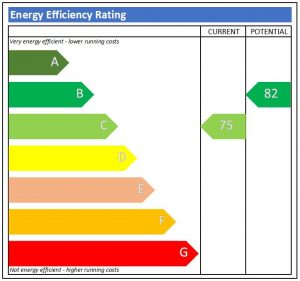The energy efficiency of British homes must be urgently improved, according to experts. In 2018, the UK’s homes produce nearly 66 million tonnes of CO2. That was more than the COs produced by the power stations that generate our power.
Homes in the UK are graded by Energy Performance Certificates (EPCs). The EPC is an assessment of the energy efficiency of the building and are required whenever a property is built, sold or rented. The EPC assessment includes information about the property’s energy use and typical energy costs as well as recommendations on how to reduce energy use and save money.

The grades A-G are awarded, with A being the most efficient and G at the opposite end of the scale. Homes that fall in the lower grades mean householders spend far more on their energy bills than necessary, and have a larger carbon footprint. Under current rules, landlords cannot let a property under a new tenancy or renewal if it is assessed below EPC grade E.
The government has set the target for all fuel-poor homes and as many rented homes as possible to be upgraded to the average EPC of grade C by 2030. By 2035, it wants as many other homes as possible to be upgrading “where practical, cost-effective and affordable”.
However, with an estimated 12 million homes currently falling short of grade C, the task is by no means simple. Recent analysis has shown that around two thirds of our homes currently fail to make the grade.
Homes built prior to 1990 are unlikely to meet EPC C or above unless they have been retrofitted with measures to improve their energy efficiency.
The Department for Business, Energy and Industrial Strategy is investigating ways to reduce the cost of retrofitting existing properties with low carbon alternatives. It is also investing money in helping homes use lower carbon alternatives and in April last year published details of its wider research into heat decarbonisation, which explored ways of ‘converting a UK town to low carbon heating’.
There is a disparity between homes in rural and urban areas. Rural homes account for the highest average CO2 emissions by local authority. Homes in rural areas are more likely to be older and use LPG and solid fuels due to the lack of availability of mains gas.
Passivhaus building standards can make homes 8% more costly to build than traditional houses. However, the standard can be retrofitted into existing properties and makes buildings more efficient and cheaper to run. Many homeowners living in such properties have found that they almost never need to boost their home’s heating once the property is converted.
Ask a Chartered Surveyor for a building survey if you’re moving into a new property.
© www.PropertySurveying.co.uk
SH/LCB


